
Issue #: 140
Published: March / April 2015
- Price per issue - digital : 5.40€Digital magazine
- Access to Multihulls World digital archives Digital archives
Going round the world as a family on board the Suricat, Alice , Eric and their children fell under the spell of the Marquesas Islands... A Heaven on earth!
In my pre-sailing days, which now seem very distant, I worked in the tourism industry and in particular for super luxury 5 star plus hotels: the very top of the hotel sector in Polynesia. The two, very direct english words which summed up what we were trying to achieve when we were modifying or renovating these palaces were the "Wow Effect!", which the wealthy tourist taking their first steps on the hotel's marble floors needed to experience.
What have the Marquesas got to do with this? It's simple. Neither Starwood or Hilton or any other group could invent this place. Here is what that "Wow Effect" is all about. This group of islands more than a thousand nautical miles from any inhabited region, and every bay, landscape, waterfall, swim or encounter inspires the "Wow Effect."
Having made a long crossing, such as the Pacific, it was only natural for us to be somewhat emotional upon our arrival, but for us the icing on the cake was that what we found wasn't just any island or place. It was THE place. A Land of Men as they say, a wild land, a generous land, the Promised Land...
Of all the places that we had visited since the start of our journey, this was the most complete: the one where we found everything that we had been looking for. Mind you, we have to admit that the moorings weren't the best: in fact they were usually pretty uncomfortable, and reaching dry land often meant taking one's life in one's hands. I suppose there has to be a good reason to leave somewhere though. Otherwise as Jacques Brel said, "we'll end our days there..."
The Marquesas are worth the visit...Once you're moored you can discover their magic.
This expression is used initially to underline the difficult nature of the conditions endured by the inhabitants of these lands, where the cliffs are as abrupt as they are majestic, where the sea is always lively, and where the strengthening Alizé can turn it into an enemy. Not to mention the isolation of these islands and the necessity to be self-sufficient which comes with it.
Only real Men, with a capital M have been and are still able to survive in such an intense environment. He needs to be virile, a hard worker, a pig-killer, a bareback horserider, a day or night fisherman, fearless, a sculpted and tatooed Maori and an "aito" (which in tahitian means strong, just like the indestructible tree which bears the same name.)
However, after a month and a half in situ, and after meeting so many of the local population, this expression lost some of its heroic and even macho sense, and gave way to a slightly different reality. This is a Man's Land because the population that we met opened up completely to us the visitors, despite their geographical isolation. What we saw was their generosity, their open-mindedness, their love of nature in the raw and the symbiosis which exists between that Nature and these men. They are the human incarnation of their islands: complete and generous.
After our first few encounters, we were reminded a little bit of the San Blas islands, where at this time of year sailors arrive in their hoards. They are seen as a great source of material wealth (as there is no money available locally, we barter some of our onboard foods against the first fresh fruit that we've consumed after weeks at sea.) We were then able to meet some real locals in quiet bays which were off the standard routes for long distance travellers.
It's worth mentioning that at this time of year, there are sometimes up to fifty boats in certain moorings, which obviously makes it harder to meet people. It's impossible to really get to know people in the middle of a crowd....
When we first came into the northern bays of Hiva Oa, we began to see and recognise these Marquesans, these Men of the Land Of Real Men. In Hanamenu Bay, it was as though the wild horses and the little river on the beach were just waiting for us, just to reinforce the image of heaven on earth that we all have in our minds. It was here that we met Ani, soberly dressed in a grass skirt, and covered in tattoos from head to foot, cutting back the tall grass surrounded by his horses. For a moment we were almost afraid of him, until he turned around all smiles and offered to share some freshly picked bananas with him. He also opened some coconuts to celebrate our arrival in his bay which is inaccessible overland...
Watch out for Ciguatera: only fish caught out at sea can be consumed, and even then...
In Hanaiapa Bay, it was Adam, a young man of around twenty, who calm as you like invited us to have lunch with him the next day. He had drunk and smoked a little too much in his early teenage years in Papeete, and had decided to make a fresh start working the land on his native island. He had just enough time to hunt a pig up in the mountain that evening, get back home with it at 1am, then get up at 4am to cook it and sort out the goats cheese and breadfruit... All that just to serve us a pantagruelian lunch. He also showed us his drawings and the tatoos that he would like to draw once he will have learned how to execute them. He offered us fruits from his garden and even some from his aunt's or granny's garden, al the while telling us about his life and his everyday, without expecting anything in return.
In Omoa there was Robert, who welcomed us, poor straggling travellers, clutching our computers in waterproof bags and on the lookout for that rarest of animals in the Marquesas... an internet connection. For five hours we sat on his terrace, one eye on the computer screen (to update the website!) and an ear or rather both, tuned into this happy jack the lad telling us his life story. We left him armed with some great tips about fishing, a bottle of honey straight from his hives, and a few dried bananas for the road...
Or Alphonse, in charge of the parish of Hatiheu, who kept me company in the shade of a tree, and told me all about his life, working at Muroroa in the CEP days (nuclear testing), the years he spent in Tahiti, his return home. And of course there was a present for us... he led us under the grapefruit trees and allowed us to pick as much of the ripe and juicy fruits as we wanted.
There were others too, in each bay and each village. Encounters, smiles, people helping us out, stories, lives...
Contact is easy here, with no hidden agendas and especially no complexes. The fact that they are not poor, and possess not just Nature's riches, but also all the benefits of the french health and education systems, which spread out to even the most remote villages, means that there is none of the ill-feeling that we used to detect in our earlier voyages. There is no third world here to clash with the western sailors who take luxury for granted. There are just an island people and sailors travelling across the oceans. And more often than not, it is them who want to help us out and offer us fruit to perk up our poor tastebuds which have been subjected to a diet of rice and pasta, leaving us close to developing scurvy (only joking mom), or giving us a lift to spare us walking for hours in the blazing sun. All of this undoubtedly makes for a healthier and more sincere kind of relationship.
Going around a cliff, a little slice of Paradise opens up just for us...
In each bay there would be a river or waterfall, running straight down from the mountain, almost always drinkable. Such a rare ressource on the rest of the planet, and full of minerals which enliven our tastebuds, desensitised as they are by the water from the desalinator. There is a surfeit of clear, sweet water, something that we dream about, living the whole year on salt water.
I would never have thought that doing the laundry by hand could be such an enjoyable experience. Not just small bits and pieces of laundry. The real stuff: sheets, towels and all of our gear. Good old-fashioned laundry that takes a good three hours of scrubbing, rinsing, a good half an hour of hanging out and then an hour spent bringing it in and folding it. It's one of the joys of life on board (when there's no washing machine on board or laundry in sight). Just doing one's laundry between the Fatuiva sugarloaves, on the quayside overlooking the Manta Rays of Hanaiapa, or even by the sea-sculpted rocks of Ua Pou at sunset, under the watchful and slightly pitiful gaze of the local Polynesians who are on the verge of offering their help is one of those moments of rare beauty... Beauty and laundry... Those terms could only be used in the same breath out here.
Drinking and washing are all very well, but there comes a time when we have to start thinking about eating... No problem! Help yourself! Open bar! In just one walk that we took (mainly in Hane Bay in Ua Huka) we filled our bags with lemons, grapefruit (the best in the world), sweet and aromatic guava, tart pomegranates, green oranges, mandarines, soursops, ambarella and not forgetting the staple of the local diet: bananas.
The inland areas are incredible. You need to risk getting lost if you want to find something really special...
What about protein I hear you say...Now you're talking! There's enough to tempt the most hardened vegetarian. There's a choice of menus: fish, wild pig (the "pua"), small wild goats cooked with coconut milk, eggs of the Common Tern...There's something for everyone! The only downside, and it's quite a major one, is that the Marquesas is a zone where Ciguatera is very prevalent (a toxin transmitted by an algae that develops on broken corals. It is then ingested by small fish which are eaten by larger fish, particularly those which we in turn would like to eat). Around the same island, the same fish will be edible in one bay but not in the neighbouring one. In Fatuiva you can eat the Blue Trevally but not the Black one. In Hiva Oa it's the opposite... Never a Parrotfish, maybe an Emperor fish, but not that one to the left of the rock, rather to the right, and let's hope that they don't visit each other on Sundays...
Some recommend the "hanging fillet" test. The technique is simple. open up the fish and hang the fillets. If they stay firm and just retract slightly, the fish can be eaten. If it hangs limply like a rancid escalope, then it can be thrown out. Another method is the Fly Technique. If they land on the fish then it's OK, otherwise you should throw it out. Or is it the other way round?
The locals who are already infected with the poison say that they get pins and needles in their fingers as soon as they begin to clean a fish which carries Ciguatera.
Every fisherman has his own technique...and all with dubious results.
For us then, the rule was that fishing in the Marquesas was out! Unless it was out at sea, like the time we hooked a big 1.40m Mahi Mahi when fishing between two islands, or the tuna which feeds the family for a week. That's ok! The same goes for shellfish, which abound in certain areas. If in doubt, leave them alone. Three boats which arrived in Anaho Bay in Nuka Hiva before us had an unfortunate experience, with two people ending up being evacuated to the Accident and Emergency unit in Papeete. Ciguatera probably wasn't responsible that time. It was more likely another toxin which plays havoc with our digestive and nervous systems. It was extremely frustrating, as both times that we went for a spin in the dinghy, with the fishing rods trailing out the back, we'd caught 6 big fish within 20 minutes. However, the locals advised us to throw everything back. Mother Nature is certainly generous, but she can be a little mean too...
Horse lovers will be in heaven. Horses are everywhere on the Marquesas.
When we finally arrived in Fatuiva after our rather tedious Pacific crossing, we got the impression that we were arriving at the Jurassic Park island. And to be honest, it wouldn't have surprised us if we'd seen a dinosaur in the wild, almost prehistoric landscape. We had to make do with the local wildlife, which was as diverse and surprising as a scene from a Discovery Channel prime time show.
There were small goats on each cliff, whole herds, roaming free, miraculously scaling the steepest slopes, and serenading our nights with their low bleating. We would sometimes watch them and salivate a little, having already sampled the local delicacy: small goat cooked with coconut...
The pigs are wild too, but we rarely saw them. They have to be hunted in the forest, which is usually dense, and it's a type of hunting that isn't for just anyone. Some of the locals told us that not all hunters ever make it back. The conditions are so tough and dangerous on this young, steep mountain, that to succeed and make it back, you need to be a "Toa" "(warrior).
Instead, we preferred to stick to hunting Tern eggs on Ua hua, the great bird rock, in Haavei Bay. No need for a warrior's courage here, rather the agility and strength to climb up the 10 metres of ropes which rise from the surface of the sea (very choppy) along the cliff face, which lead to the rock's "plateau". I'm not really in a position to talk about it, as I didn't manage to haul myself up (although I didn't perhaps try too hard). The Terns twirled around in their thousands, screeching and jostling over this zone which is ideal for them to build their nests. These creatures seem to lay eggs at will. Every half an hour or so. The locals come by every 2 or 3 days to collect bucketfuls, each one collecting 40 buckets of 400 eggs (work it out). And if a boat has already passed by, they just wait for half an hour, and the egg laying starts again, and goes on and on. But the thing is, that the Terns feed on fish, so their eggs, which are a very particular colour and texture, also taste of fish...
A church on the edge of the world: the unique atmosphere of the Marquesas!
Horse lovers will love the spectacle of the wild horses on the cliffs overlooking the boat's mooring. It's an almost unbelievable spectacle, to wake up early in the morning and be faced through the steam from your coffee with Terns blocking out the sky, and behind the plate of pancakes half a dozen wild horses sharing their playground with herds of dwarf goats
I've saved the best until last though...Amongst all this incredible wildlife, the prize goes to the queen...the goddess of the seas, my only rival for my man's heart, as he has had her tatooed on his arm for the last 15 years. I named her Fafa Piti, the Manta Ray, The Manta Queen! We struggled for years in some of the world's most prized diving zones, just to catch a glimpse of a tail. But here... In each bay and in each mooring, we get excited at the sight of any dark shape. And almost every time it's Mantas! Not just one small, hidden, timid ray. No, three, often four or five... We once saw around 20 of them, feeding at the surface of the sombre bay water, offering an unforgettable image. They surrounded us, showing total indifference to us, brushing against our palms without any reaction. Here, at home, they are everywhere, in water where there is an abundance of plankton of all shapes and textures, some almost extraterrestrial! It is so dense that they can only move slowly, and you can almost hear them enjoying their dinner. Yet we never, NEVER get tired of admiring them. When bad weather "forced" us to spend 10 days in Hanaiapa Bay in Hiva Oa (I use inverted commas as this stopover was one of the best we've ever done), we spent a good two hours in the water every morning, along the bottom of the cliff face admiring them as they visited their cleaning station. Here, tiny fish get into every nook and cranny of their huge bodies, to help give them a valet service. Moving, majestic, unrivalled amongst the planet's creatures. Well in our admiring eyes at any rate. The Mantas in the Marquesas are like the Lion Fish of Roatan , or washing machines in the Tahiti lagoon : there are loads of them!
Hunting (or fishing?) for eggs...
If the Bahamas, where we began our trip, was the haunt of retired Americans and Canadians, then the Marquesas witnessed many encounters between families voyaging on boats. We would never have believed that the sailing population on the other side of the Pacific (which first has to be crossed!) would have such a low average age.
I don't need to tell you that the tribe of kids was the icing on the cake. Coline and Eden were already lucky to have gone through the Panama Canal and then crossed the Pacific, only a few metres away, and never more than a VHF frequency away from, their great friends Lou and Devi, (8 and 9) on the Zouk. For her 7th birthday, Coline was even treated to a "Happy Birthday" sung around the piano by her two friends and broadcast on Channel 16 in the middle of the Pacific! Sheer luxury!
But, as the old adage says, the madder you are, the more you laugh. And once we had hit Fatuiva, there was much merriment in the moorings! The Suricat's trampoline took a beating from our little ones jumping on it manically day after day.
A few days after our arrival, the Lumbaz weighed anchor in our mooring, arriving from the west coast of Mexico. There was Dani (the Hispanic-German father), Eugenie (the Franco-Spanish mother, with a bit of Russian thrown in), Ainara (12), Luna (10), Noa (8) and Nils (4). The men hit it off straight away discussing technical issues (the Lumbaz was missing its windlass upon arrival, which meant that navigating around the Marquesas and beyond was unthinkable) The ladies got on well too, obviously. Here was another Wonderwoman, adding to the ever-growing list. Mother of 4 children, yet perfectly relaxed, which would be impossible for me. Lively and full of get up and go, she was also a talented contemporary dancer, which as a fellow dancer I greatly admired. This really gave me a boost after the fatigue of the journey, and I was ready to go again...Great encounters.
The cliff face which leads to the birds' nesting plateau is a fairly hair-raising climb.
But back to our little ones, who are the subject here. They soon formed a gang: Coline and Eden, Lou and Devi from the Zouk, the 4 polyglot kids from the Lumbaz (4 languages each and 5 for the big ones!), followed by Soan (8) from the Izyan and then Ana (6) and Ulysse (4) from the Bulle, not to mention those who passed through fleetingly. With a crowd like that, the kids could only have a fantastic time...
When we were at the planning stage of our voyage, some within our circle had a legitimate concern that we were imposing it upon our children. They had not asked to be taken along, and to suffer sea-sickness, hours of uncomfortable sailing, paperwork and laundrettes, stressing out over technical problems and all the other trials and tribulations of life on board. There is an element of truth here, but before setting off, in my mind's eye I saw my boat children on the quayside of the marina in Tahiti. And I knew that this voyage would offer my girls the best childhood that they could ever have. Some could have seen us as egotistical parents, following our dream, and dragging our kids along to share our problems and dangers. That may be true, but we are not shamed by our egotism when we see our girls living out experiences such as those in the Marquesas. Yes, it's perhaps pure hedonism, and they were able to share it with all of their friends.
For regions like the Marquesas, nothing will ever replace the boat as the best means of transport. Whilst it's certainly the slowest and most expensive way to do it, it was the only one which could have got us to some of the world's most remote and pristine environments... The Suricat is our home, our means of transport. But it is also more than that. It's our loyal steed that has got this far, and we will forgive her all her weaknesses...
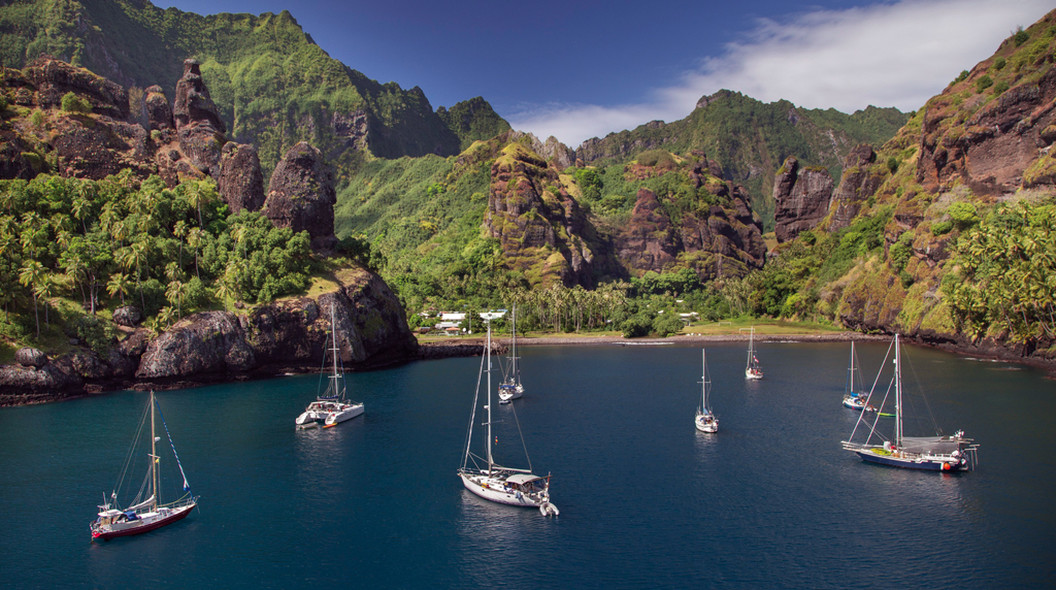
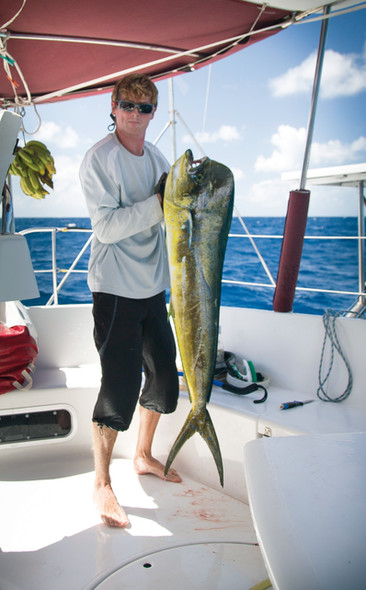
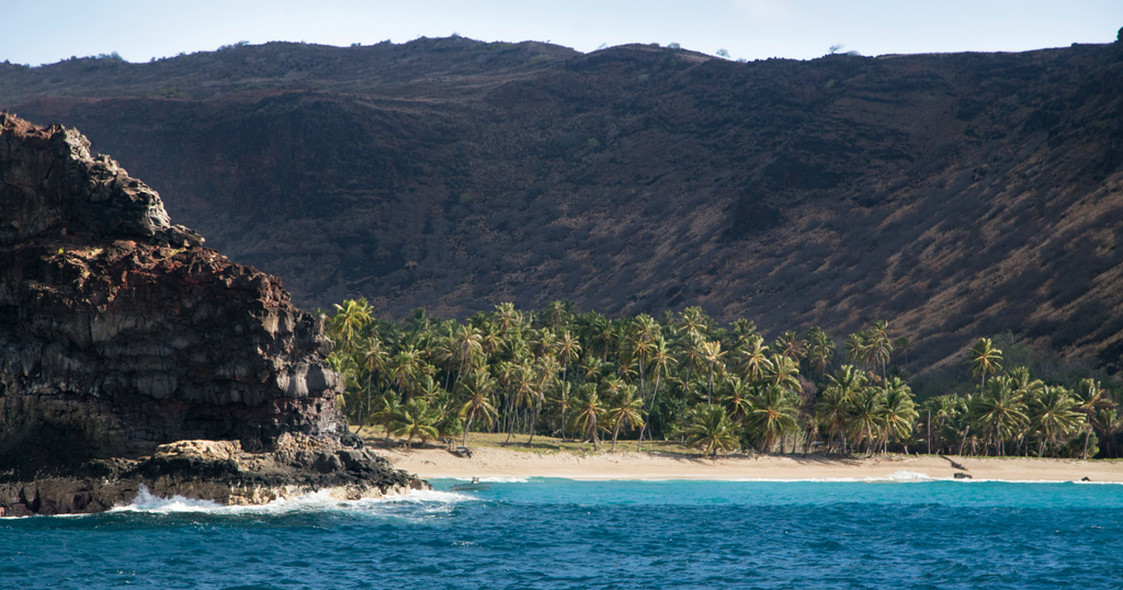
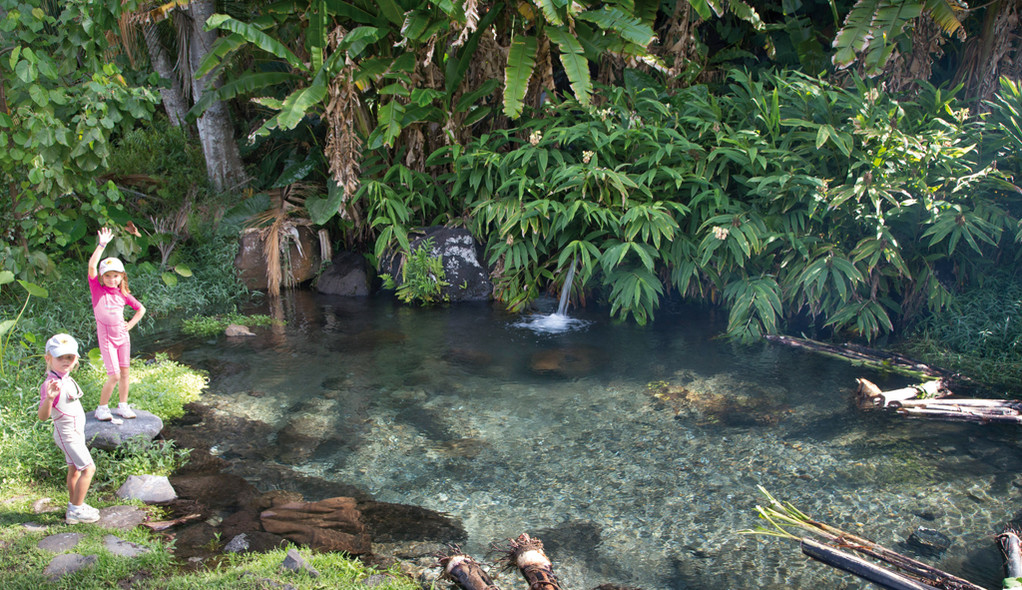
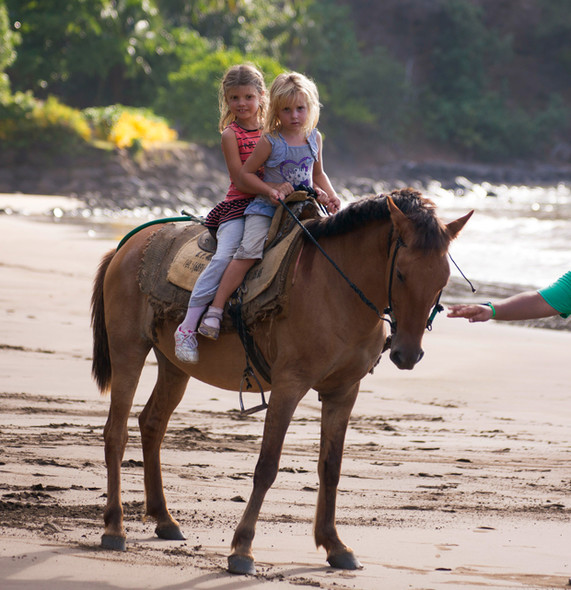
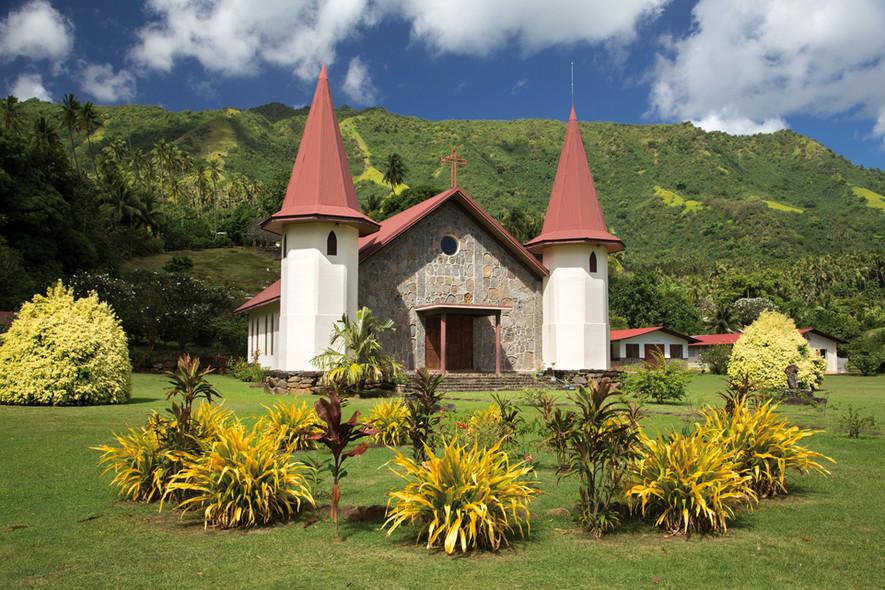
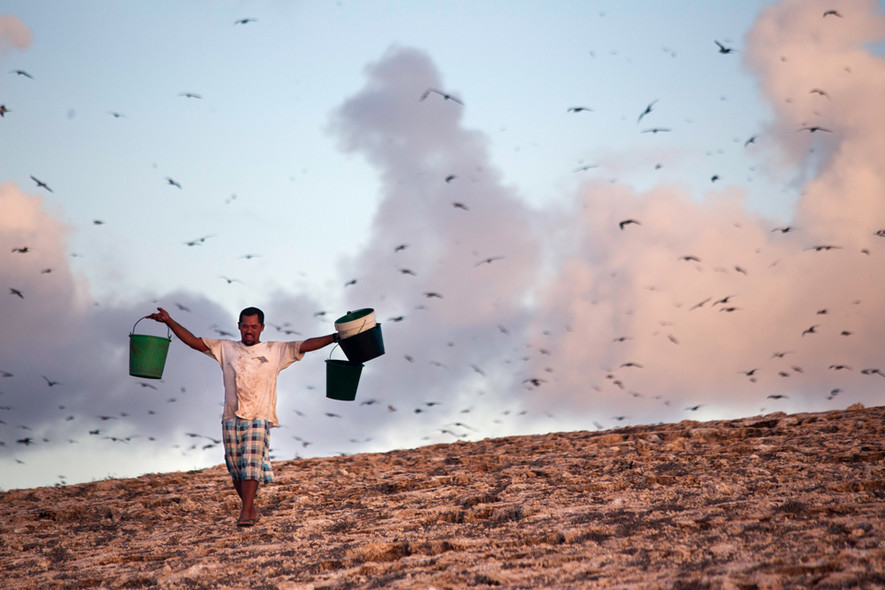
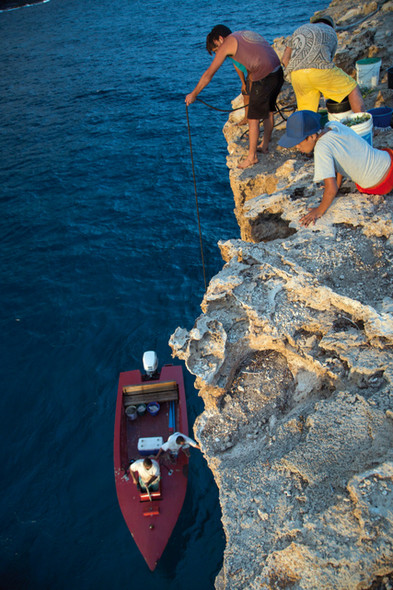
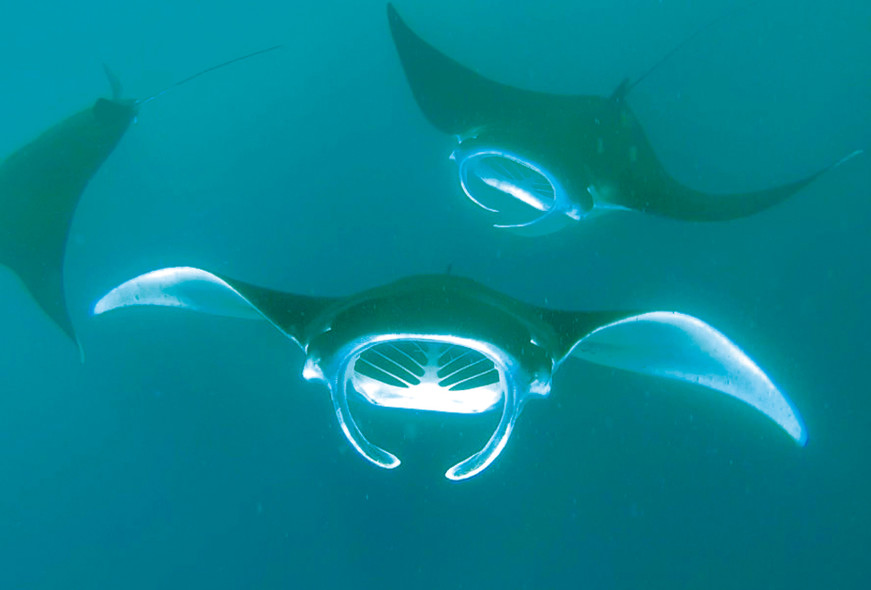
What readers think
Post a comment
No comments to show.